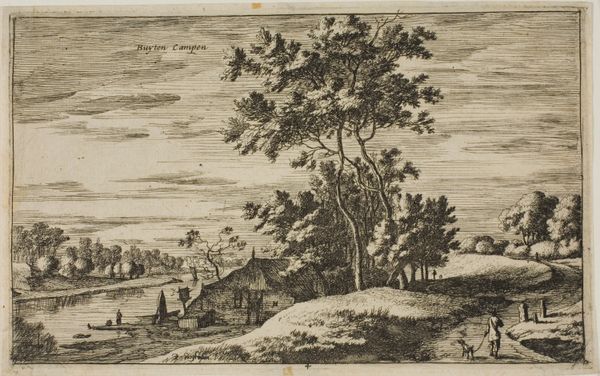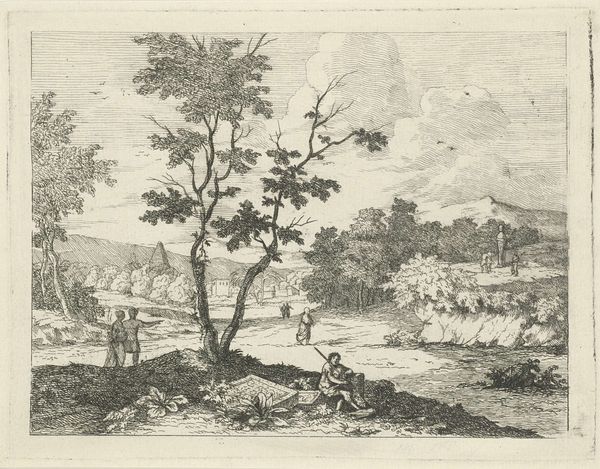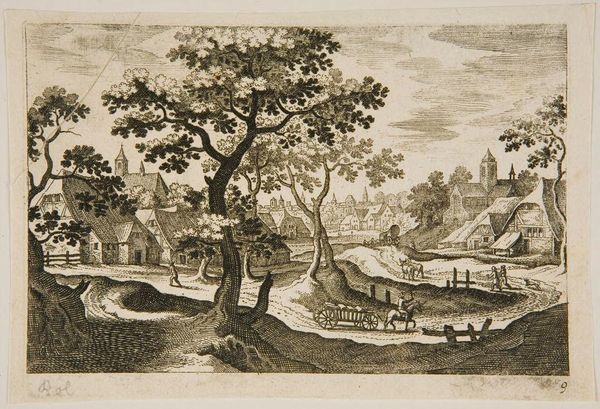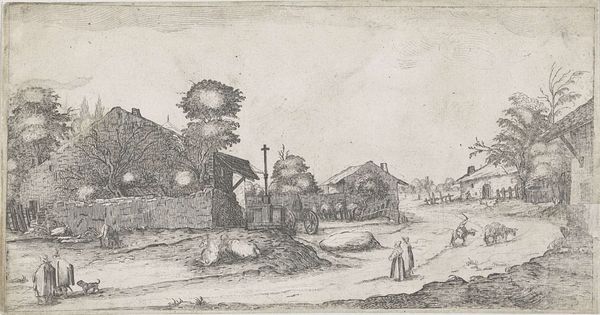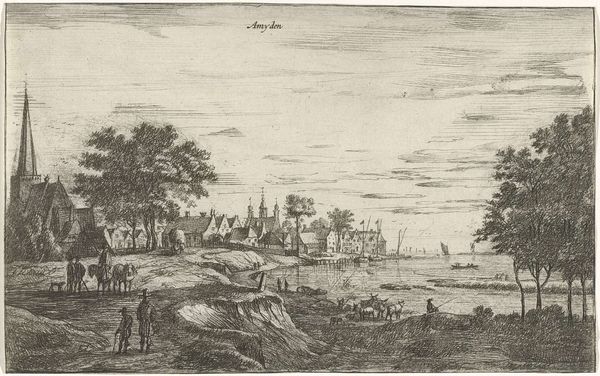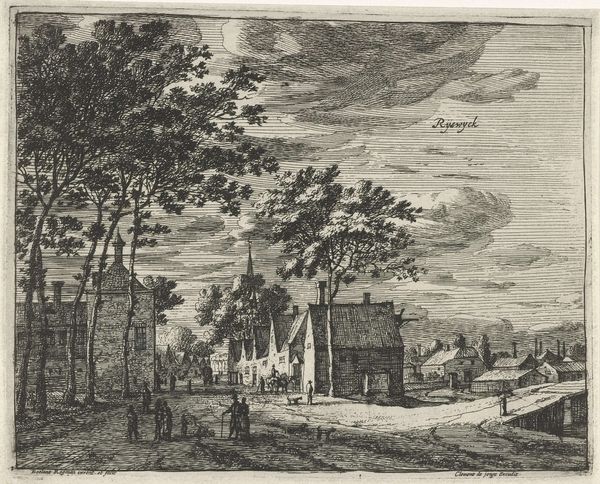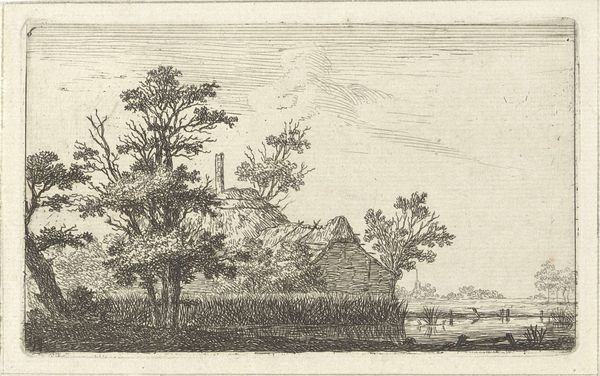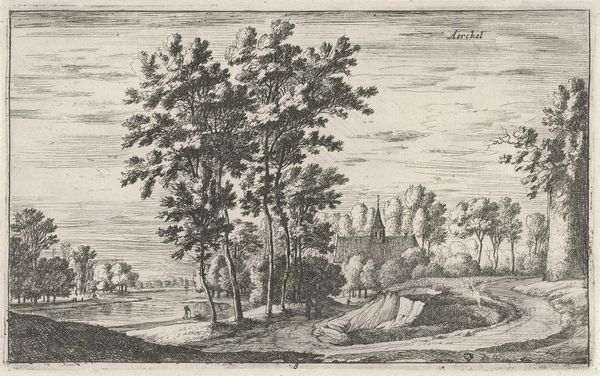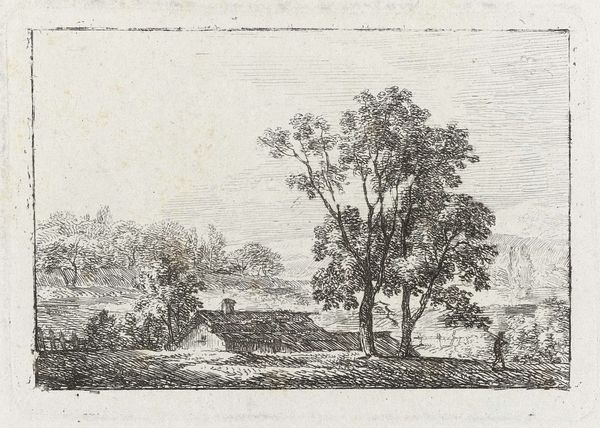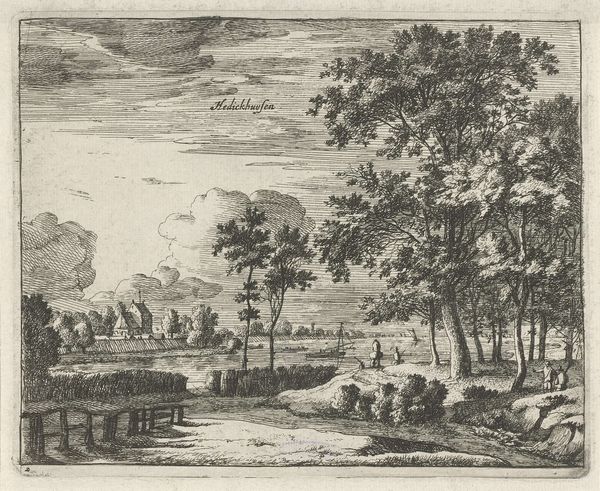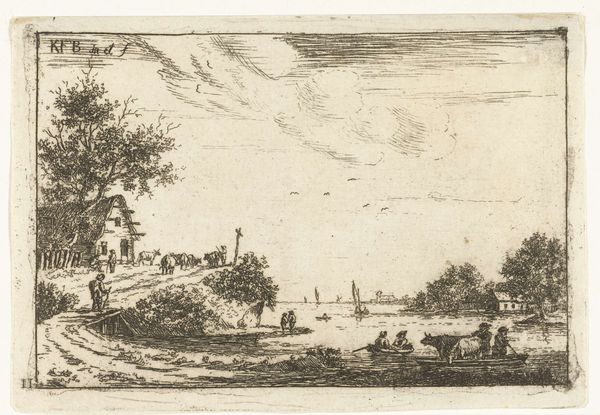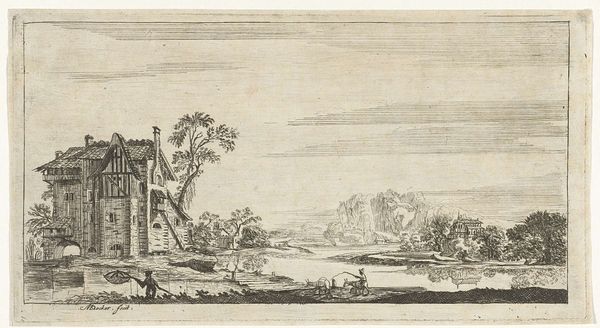
print, etching
#
pen drawing
#
dutch-golden-age
# print
#
etching
#
landscape
#
cityscape
#
realism
Dimensions: height 133 mm, width 167 mm
Copyright: Rijks Museum: Open Domain
Roelant Roghman made this print, Veer bij Schoonhoven, using etching, sometime in the 17th century. Roghman would have covered a copper plate with a waxy ground, then drawn through it with a sharp needle to expose the metal. The plate was then immersed in acid, which bit into the exposed lines, creating grooves. Ink was applied, the surface wiped clean, and the print pulled. The resulting image, multiplied and distributed, speaks to the rise of mercantile capitalism in the Netherlands. Etching was a relatively quick and cheap process, ideal for meeting the growing demand for images. This particular scene depicts a commonplace subject: the daily labor that literally powered the Dutch economy. Looking closely, you can almost feel the weight of the materials, the texture of the paper, and the presence of the artist's hand. Appreciating the labor involved, both at the Schoonhoven ferry and in Roghman’s studio, is critical to understanding its full meaning.
Comments
No comments
Be the first to comment and join the conversation on the ultimate creative platform.
